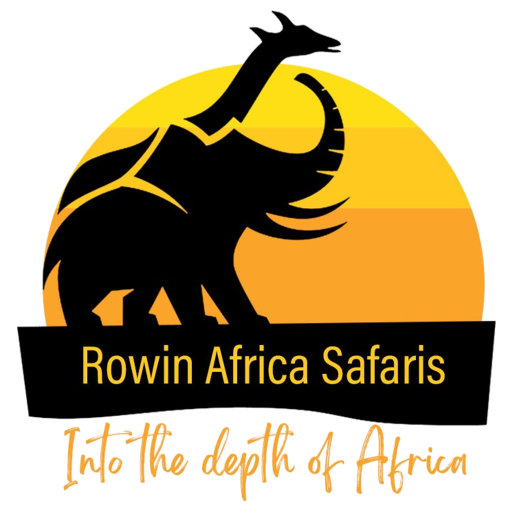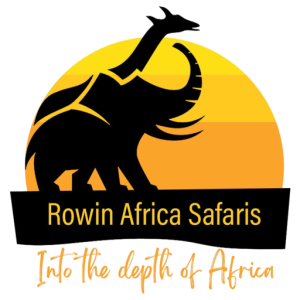180 kilometers west of Arusha in Tanzania’s crater highlands is the Ngorongoro Conservation Area, a UNESCO World Heritage Site. The Ngorongoro crater, which can be located there, gave the region its name. It has an overall area of 8,292 square kilometers and was founded in 1959. The Ngorongoro Conservation Area Authority, a division of the Tanzanian authorities, is in charge of Ngorongoro.
Attractions in Ngorongoro Conservation Area
Ngorongoro Crater
The 610-meter-deep, 265-square-kilometer Ngorongoro Crater is the world’s largest dormant, perfect, and unfilled volcanic crater. It is also one of the most well-known places for its abundance of species. Visitors to Ngorongoro Crater are rewarded with some very breathtaking views. Soft drink waters like Lake Magadi in the Ngorongoro Crater attract more bird species like flamingos and other aquatic birds. You may have picnics here while taking in the scenery.
Big 5 Animals
One of the rare places in Tanzania where one may locate all five huge Big 5 Creatures is the Ngorongoro Conservation Reserve. Elephants, lions, panthers, rhinos, and bison are among the “big five” animals that are unquestionably grouped in Ngorongoro. The black rhino is one of these massive five animals that seems to entice everyone who enters this magnificent protected area in Africa despite its attractiveness.
Birdlife
Birdlife Additional bird species are white storks, yellow wagtails, saddle-charged storks, ibis, ostrich, kori bustards and other more kinds.
Olduvai Gorge
The most ancient human skull was discovered by both Dr. Louis and Mary Leakey at the Olduvai Gorge, which is referred to as the “Support of Humankind” and spans a 45 km stretch of the Great Rift Valley between the Ngorongoro Crater and the Serengeti National Park. The Olduvai Gorge is frequented by a variety of tourists throughout the year because of its provable connections, notably those with anthropology.
Cultural Visit
The Maasai people, who were the area’s original residents and coexisted with the animals there until they were relocated to nearby communities outside the protected region, can be encountered by visitors while on a Ngorongoro safari. Tourists benefit from a genuine social interaction and can join them in a variety of activities, such as gathering dairy goats and calves, draining, or, in any case, dancing to their usual music.
Wildlife
Wildlife in Ngorongoro is incredibly diverse, with a huge variety of natural life species roaming the area, including wildebeests, zebras, wild dogs, cheetahs, and reedbucks, as well as gazelles, spotted hyenas, hippos, elands, and blue monkeys, among many other species. The majority of visitors come to the Ngorongoro Conservation Area to enjoy the wildlife viewing.
Activities to do in Ngorongoro Conservation Area
Game Drives
At Ngorongoro, game drives are incredibly rewarding since they often transport visitors to the Ngorongoro Crater via lush high country forests from where astounding birds may be viewed as well as natural life. Sightseers are rewarded with unusually vast numbers of wild life moving around as well as hunters pursuing their prey during a game drive at the lush Ngorongoro Crater floor. Tourists make sure to cross off every item on their list of things to see when on an African safari since there are more than 25000 wild animals reported on the Ngorongoro Crater floor. Depending on the time of year, tourists can spot pink flamingos on the lake’s shoreline while spotted hippos roam a nearby swamp on a game cruise around Lake Magadi. The Ngorongoro Conservation Area’s game drives are the real deal, and they are definitely distinctive to many other Africa safari attractions.
Bird Watching
Another activity to look forward to on a safari in the Ngorongoro conservation area is bird viewing. The birding activity in and around the cavities is incredible, with more than 300 different bird species present, including, for instance, lesser flamingos around the beaches of Lake Magadi. The greatest time to travel is during the rainy season, when the Ngorongoro conservation area should be home to both migratory and resident bird species. In Ngorongoro, there are places to go bird watching in the highlands and in the forest. Ostriches, delegated cranes, secretary birds, kori bustards, monetary shrikes, storks, weaver birds, Livingstone turaco, dark winged lapwing, dark kites, red and yellow barbet, rufous followed weavers, vultures, starlings, red chested sunbirds, falcons, among other bird species, are some of the species of birds.
Nature walks
The Ngorongoro highlands are a perfect blend of breathtaking scenery, wildlife, and cultural heritage, and those who truly do have the opportunity to take part in nature walks are rewarded with such breathtaking views and have the opportunity to get to know the Ngorongoro by walking. a lot ofa of thea lot of a lot of a lot of as as res.
Best time to visit Ngorongoro Conservation Area.
The Ngorongoro Conservation Area can be visited all the year around. Nevertheless, the dry season, which lasts from May to October, is the finest time to visit the region since it’s the ideal time to do game drives because the wild wildlife congregates in the accessible water spots to drink or take a dip.
But, during the wet season, which lasts from November to April, visitors may take in the breathtakingly green and gorgeous scenery as well as the animals, which grazes on the lush green meadows as the predators stand guard and snarl at them.
How to get to Ngorongoro Conservation Area
Both the road and the air may be used to reach the Ngorongoro Conservation Area.
Travelers can charter aircraft from Kilimanjaro International Airport or Arusha Airport to any of the airstrips in the Ngorongoro region.
By car: It takes roughly 2 hours to drive the 160 kilometers from Arusha to Ngorongoro. Those that take the road transfer to the Ngorongoro Conservation Area see a highly eye-opening firsthand view of rural Tanzania.
Accommodations in the Ngorongoro Conservation Area
Tourists may stay in a variety of Ngorongoro lodging options while on a safari. They are available both inside and outside the conservation area and range from luxurious to inexpensive to mid-level.
For guests seeking further comfort and amenities, the Ngorongoro Crater Resort and the Ngorongoro Forest Tented Lodge provide supreme luxury.


